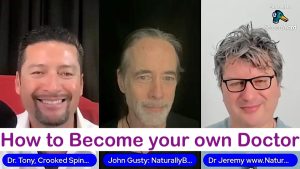
It is 2025. Most Americans find their out of pocket cost for healthcare getting more expensive; and they experience poor care when they do see their doctor, including an endless supply of medications that have short and long-term side effects. Alternative and Eastern medicine can help you, but how do you know which ones really work? Today’s talk with John Gusty & Dr. Jeremy Ayres help us understand how we how we got here; and how we can personally take care of our health outside our Western medical healthcare system.
Watch this Full Video:
Subscribe, Listen to this episode on
Questions for the show:
-John, why did this field of healthcare become a passion for you? And the same question for Dr. Ayres.
-How is our most powerful and richest nations (USA, USA!), still one of the sickest nations in the world?
-How is Eastern Medicine and Homeopathic Medicine different than Western medicine?
-Why do very few western medicine doctors choose to integrate alternative medicine care? Is this what the book you co-authored “The Red Pill Revolution” is about?
-Long-term, what are the benefits/risks of prescription medication use vs. lifestyle changes (for example, diabetes type 2).
-Is the news, social media helping or hurting our mental health? Is there a healthier way to learn “just the facts”?
-How much can a health coach help someone learn to be independent from their medical doctors?
-Let’s discuss your The Naturally Better Program.
1. What is the research behind it.
2. What type of conditions are helped by this program.
3. What is reasonable timeframe to see long-term results.
4. Is the coach 1-on-1, group, etc.
-Anything I missed that you want to discuss.
-Can I get each of your takeaways, to help my audience understand you and your program.
Podcast: Play in new window | Download
Subscribe:







